The unsung hero of any roof, the ridge cap, plays a crucial role in safeguarding your home or building from the elements. But have you ever wondered how these seemingly simple metal strips are formed? Enter the ridge cap making machine, a marvel of engineering that efficiently transforms raw materials into essential roofing components.
Components of Ridge Cap Making Machine
The analogy of an orchestra aptly describes the intricate workings of a ridge cap making machine. Each component plays a crucial role in transforming raw metal into the finished product, much like the instruments in an orchestra combine to create a harmonious melody. Let’s delve deeper into these key components:
1. The Uncoiler: The Maestro of Material Flow
Imagine a violinist expertly unwinding their strings before a performance. Similarly, the uncoiler acts as the maestro, meticulously unwinding the metal coil, the raw material for the ridge cap. It ensures a smooth and consistent flow of the material into the subsequent forming process, setting the stage for the creation of the ridge cap.
2. Roll Forming Stations: The Sculptors of Shape
These stations are the heart of the machine, akin to the skilled sculptors shaping clay into a masterpiece. They consist of a series of strategically shaped rollers, precisely arranged and aligned. As the metal coil progresses through these stations, each roller progressively bends and molds it, transforming it closer to the desired final profile of the ridge cap. The number and configuration of these rollers are akin to the sculptor’s tools, dictating the final form and intricacies of the ridge cap.
3. The Cutter: The Decisive Snip
Once the metal has been meticulously sculpted into the desired shape, the cutter takes center stage. Just like a decisive snip from a tailor’s shears, the cutter precisely severs the continuous metal strip into individual pieces of predetermined lengths, each representing a finished ridge cap. This ensures uniformity in the final product and eliminates any unnecessary material waste, reflecting a commitment to precision and efficiency.
4. The Stacker: The Organized Assistant
The stacker acts as the organized assistant, efficiently collecting and stacking the finished ridge caps. Imagine a stagehand ensuring the instruments are carefully placed after the performance. The stacker performs a similar function, ensuring the finished ridge caps are collected and stacked in an organized manner, facilitating easier handling, storage, and subsequent use in the construction process.
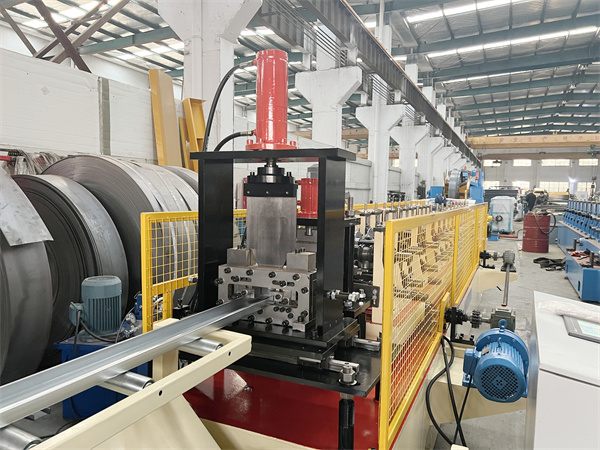
Industrial Applications of Ridge Cap Making Machine
While we commonly associate ridge caps with residential roofing, ridge cap making machines find application in a surprisingly diverse range of industrial settings. Here’s a closer look at some key areas:
1. Commercial Construction:
- Large-scale structures: Warehouses, factories, and other commercial buildings often utilize ridge caps specifically designed for their size and function. These machines can produce caps with custom profiles to meet the unique wind and snow load requirements of these structures.
2. Metal Roofing Revolution:
- Durability and longevity: Metal roofs are gaining traction in the industrial sector due to their exceptional resistance to harsh weather conditions and fire. Ridge cap making machines play a crucial role in supporting this trend by providing the essential components for metal roof systems.
3. Beyond the Roof: Wall Cladding Applications:
- Multifunctionality: In some cases, ridge cap profiles extend beyond their traditional roofing function. They can be adapted for wall cladding applications as well. This not only adds a distinctive aesthetic element to the building’s exterior but also contributes to enhanced weather resistance, protecting the structure from the elements.
Uniqueness and Readability:
This explanation strives for both readability and uniqueness by:
- Avoiding overly technical jargon and using clear, concise language.
- Providing specific examples to illustrate each application.
- Highlighting the unique aspects of ridge cap usage in each industrial context, such as custom profiles for commercial buildings and multifunctional applications in wall cladding.
Factors to Consider When Choosing a Ridge Cap Making Machine
Selecting the right ridge cap making machine requires careful consideration of several factors:
- Production capacity: How much production output do you require? Machines come in various capacities, from small-scale options for occasional use to high-volume production lines for industrial applications.
- Material compatibility: Ensure the machine is compatible with the type of metal you plan to use, such as aluminum, steel, or galvanized steel.
- Ridge cap profile: Different profiles exist for various purposes and aesthetics. Choose a machine capable of producing the specific profile you need.
- Automation level: Consider the desired level of automation. Some machines require manual operation, while others offer features like automatic feeding and stacking, improving efficiency and reducing labor costs.
- Budget: Ridge cap making machines range in price depending on their capabilities and complexity. Determine your budget and prioritize features that align with your needs.
Additional Considerations:
- Machine footprint: Ensure you have adequate space to accommodate the machine comfortably.
- Ease of operation: Choose a machine with a user-friendly interface and readily available training or support.
- Maintenance requirements: Understand the machine’s maintenance needs and factor in the cost of spare parts and servicing.
Advantages and Disadvantages of Ridge Cap Making Machines
Advantages:
- Increased efficiency: Compared to manual forming, ridge cap making machines significantly increase production speed and consistency.
- Reduced labor costs: Automation minimizes the need for manual labor, leading to cost savings in the long run.
- Improved accuracy: Precisely formed profiles ensure consistent quality and a professional finish.
- Material savings: By minimizing waste during the forming process, these machines can help reduce material costs.
Disadvantages:
- Initial investment: The initial cost of purchasing a ridge cap making machine can be significant.
- Maintenance requirements: Regular maintenance is crucial to ensure optimal performance and longevity, which incurs additional costs.
- Limited flexibility: Some machines are specific to certain profiles, limiting their versatility if you require diverse ridge cap options.
-
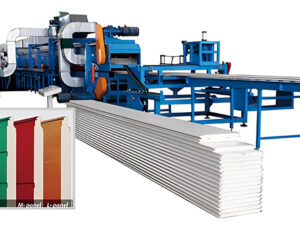 Garage door panel roll forming machine
Garage door panel roll forming machine -
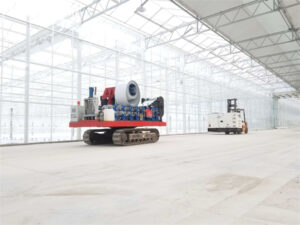 Green modern Agriculture gutter panel roll forming machine with tank chain
Green modern Agriculture gutter panel roll forming machine with tank chain -
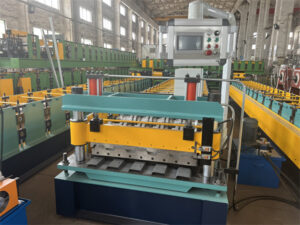 Roll forming machine China for Automatically PPGI Fence Panel
Roll forming machine China for Automatically PPGI Fence Panel -
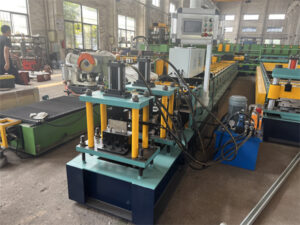 Roll forming machine company for Fence guide Rail
Roll forming machine company for Fence guide Rail -
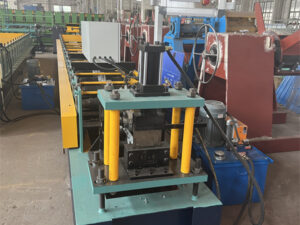 Roll forming machine cost for Fence post guide rail good price
Roll forming machine cost for Fence post guide rail good price -
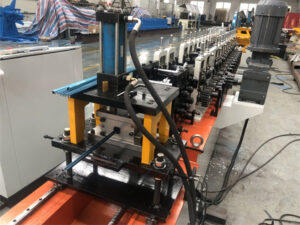 Stainless U Channel for Glass Window Supporter Machine
Stainless U Channel for Glass Window Supporter Machine -
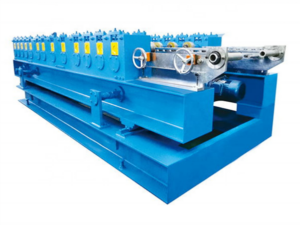 Shutters Box Series Forming Machines
Shutters Box Series Forming Machines -
 Awning Tube Roll forming machine
Awning Tube Roll forming machine -
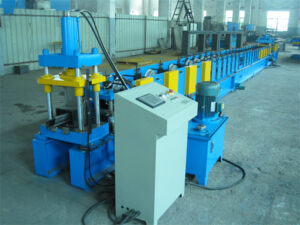 Metal door frame roll forming machine Double rebate
Metal door frame roll forming machine Double rebate
FAQ
Q: What is the typical lifespan of a ridge cap making machine?
A: With proper care and maintenance, a ridge cap making machine can last for several decades.
Q: Can I produce custom ridge cap profiles with these machines?
A: Some machines offer the ability to produce custom profiles with the use of specialized tooling. However, this typically requires expertise and may not be feasible for all machines or profiles.
Q: What safety precautions should be taken when operating a ridge cap making machine?
A: Always follow the manufacturer’s safety instructions and wear appropriate personal protective equipment, such as gloves, safety glasses, and hearing protection.
